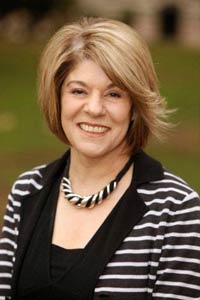Creating Racially and Ethnically Diverse Faculties
Estela Mara Bensimon, Inside Higher Ed, March 26, 2018
{snip}
But I worry that the steps that states and institutions are now taking — such as setting ambitious goals for attainment, reforming the focus on remediation in higher education and creating clear pathways for postsecondary students to earn a certificate or degree — aren’t enough. Too often, they’re datacentric approaches that focus on structures, not people, to achieve more equitable outcomes. It’s hard to see how a predominantly white faculty that isn’t prepared to teach students from a wide range of racial and ethnic backgrounds can achieve equity with these practices alone.
What’s noticeably missing from postsecondary attainment goals, now set by 40 states, is an effort to change the racial culture of colleges and universities generally — and classrooms more specifically. {snip}
{snip} Many such minority students are poor and the first in their families to attend college, and they are too often blamed for their own difficulties navigating our complex systems. We need to reform faculty hiring systems to elevate candidates of color who also show the qualities of “equity-mindedness.”
The racial imbalances between students and faculty members are extremely troubling. In California community colleges, Latinos represent approximately 45 percent of students, but only 15 percent of full-time faculty members are Latino. Meanwhile, only 26 percent of students, but 60 percent of full-time faculty members, are white.
Recognizing that the California Community College system has made a commitment to close equity gaps by 2027 in “Vision for Success: Strengthening the California Community Colleges to Meet California’s Needs,” we recently hosted an Institute for Equity in Faculty Hiring at Community Colleges. {snip}
The Center for Urban Education surveyed summit participants on their faculty hiring processes and found that 84 percent of respondents said their institution faces challenges when hiring faculty of color and their hiring processes are not designed to yield a diverse faculty.
In response to those problems, the center created a set of tools and practices to achieve racial equity in faculty hiring. {snip}
Too often, people throw up their hands at the idea of hiring faculty members who are black, Latino, Native American and Asian, saying things like “none apply” or “they get better jobs.” Another frequent complaint is that there are no such candidates in the pipeline. Some public institutions are convinced they can’t compete for talent against better-resourced private ones. They rarely view the problem as having to do with how they go about hiring or how their racial beliefs about quality, competence and fit are the root cause of the whiteness of the faculty.
But we put inquiry tools into the hands of practitioners so they can study how they do things and see for themselves that whiteness in hiring is being produced by their practices, as well as their implicit bias. A{snip}
We found this at California Lutheran University, a private, Hispanic-serving four-year institution, where the center supported efforts to change faculty hiring practices. Faculty members complained that a “culture of niceness” was a major obstacle to confronting practices and language that create a negative environment for minority faculty members. Black and Latino faculty who experienced discrimination and microaggressions were reluctant to confront their colleagues or administrators because they were aware that conflict avoidance was highly valued. The “culture of niceness” made it very difficult for them to speak up and call out practices that undermined the college’s espoused diversity values. Those who dared risked being viewed as troublemakers. {snip}
Cal Lutheran’s situation is pervasive in higher education. What’s unusual was its leaders’ response. An interdisciplinary group of 18 faculty members, as well as the provost and a dean, engaged in a yearlong transformational process. {snip} This core group of change agents was also taught about the ways in which racial bias is manifested in hiring procedures and language.
For example, a deep assessment of the hiring guidelines conducted by the center uncovered many obstacles. Job announcements were written in conventional language that did not mention that Cal Lutheran is a Hispanic-serving institution. There was no mention of valuing faculty members who engaged in culturally relevant approaches or those who could teach and mentor first-generation college students and students of color. {snip}
The results were remarkable. During the 2016-17 academic year, Cal Lutheran filled 11 new faculty appointments and one deanship. Two-thirds of the hires were people of color, including two Latinos, two blacks and three Asian-Americans, in addition to a Latina who was hired as dean of the College of Arts and Sciences.
Institutions should establish programs to train and certify faculty equity agents and distribute two for each search committee. Equity agents can review position announcements and draft questions that focus on candidates’ cultural competence and knowledge of strategies to provide direct support to underrepresented students. They can monitor the conduct of interviews and identify practices and expectations that disadvantage nonwhite candidates.
{snip}

Estela Mara Bensimon















